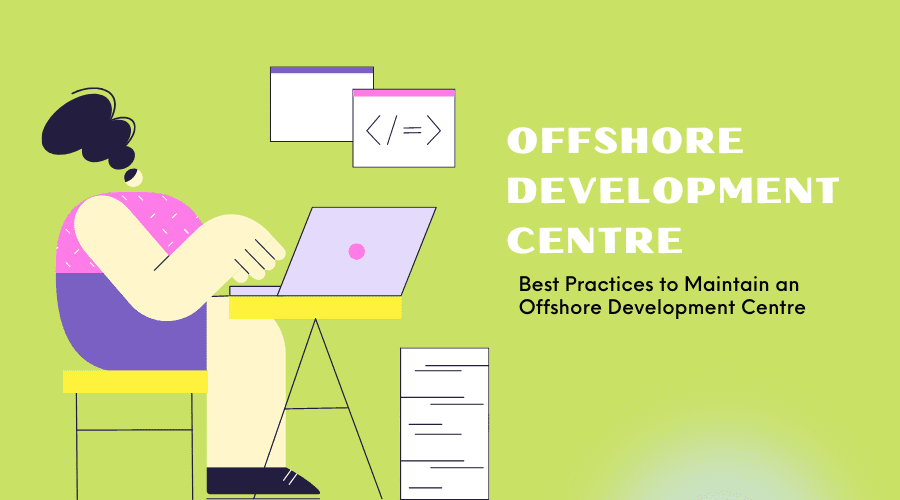Engineers are in short supply around the world. Top companies monopolise the best software developers, leaving everyone in fierce competition for talent. However, local hiring is no longer the only way to recruit. By building an offshore development centre (ODC), an organisation can develop software in a way that is often impossible in-house. An ODC is a team — or several teams — of engineers based abroad that act as a seamless extension of your team at home.
Through offshoring, western companies can gain access to talented engineers, previously unavailable to them, from talent-rich locations such as Asia and Latin America. These new engineers can bring the skills needed to build applications without compromising quality. When hiring offshore developers from a different geographical location, it can be difficult to establish a relationship. Having an offshore development centre in place can help in this situation.
Offshoring doesn’t simply make use of cheap outsourced talent. It can help build a cohesive team of outstanding developers. An excellent offshore partner can handle recruiting, enabling a business to build the perfect team by defining requirements, screening employees, concentrating on cost-effectiveness, assessing cultural-compatibility, and prioritising long-term thinking. And, they’ll also handle administrative duties, and day-to-day operations. This is all possible by managing and maintaining an offshore development centre well.
Describe the company’s culture and values.
An offshore development centre excels at developing high-quality software applications. This begins by aligning an organisation’s vision and mission with its offshore software development team. This alignment is facilitated by both the organisation and the offshoring partner.
According to developers, cultural compatibility is one of the most important factors when deciding whether to accept a job offer. It is also one of the most important for an organisation.
When setting up an offshore development centre an organisation should communicate its core values, goals, and practices to potential candidates. When working with dedicated and distributed teams, there are a few simple steps that an organisation can take towards bridging the culture gap.
The first step toward bridging a culture gap is to acknowledge it. Different languages, behaviours, and values of each individual in a company reflects its diversity. A business should get new colleagues to share their cultural background, expectations for their job, and how they work — then it should communicate its own vision and explain how employees fit into it.
This approach will help an organisation align its views on work ethics, deadlines, personal conduct and long-term expectations. A business should even consider visiting its offshore development centre to chat with them face-to-face, get to know them, to build a deeper, more meaningful relationship.
Make in-house and offshore teams equal
As both in-house and offshore teams are equally important to the company’s success, an organisation must provide the same treatment to the offshore team as its local in-house team, rather than being treated as a separate, supporting group.
This means a company’s in-house and offshore teams should stay in close contact and productively work together, including them in decision-making processes. It is important to remember that an offshore development centre is a genuine extension of a business’ wider development setup. An organisation should ensure that their in-house and offshore teams are on the same page. When an offshore software development team sees themselves as part of an organisation, they are more likely to go the extra mile for it.
Keep offshore teams inspired
The first step to developing an offshore development centre and building a better relationship among teams is to inspire them. An organisation must communicate its grand vision to its offshore dedicated development team in a way that excites and motivates them. This means explaining to them the many ways they can help in realising this vision.
In most cases, employees leave their previous employers because they don’t feel challenged enough. Therefore, organisations should expose them to all kinds of different projects and technology stacks to keep them excited. A company can help offshore developers become more competent by creating opportunities to enhance and learn their existing skills. It can uncover an offshore development team’s capabilities and expertise by providing feedback and encouraging idea sharing.
Give offshore teams autonomy
It would be best to encourage autonomy in offshore teams by allowing them to make many of their own decisions. Ignoring a remote team’s needs and directing everything they do will not make an impact. Instead, allowing teams to decide how they will complete their assignments is essential.
An organisation should rely on its engineers to understand and support its company’s culture and mission over the long term but it is also crucial for an offshore dedicated development team to be able to expand as and when they feel necessary. As a result, they must be given the opportunity to grow by having more decision-making authority.
Nevertheless, although this is a best practice, an offshore development centre is always structured in a way that allows an organisation to have the final say in making executive decisions.
Include teams in business decisions
Unlike a third-party outsourcing vendor, an offshore development centre is more than just a service provider. It is vital that an organisation treat the engineers as genuine colleagues. It is not just a random group of outsourced workers that organisations engage once and then let go. These teams should be understood as an extension of its current workforce.
Organisations should ensure that they are a part of the process and are involved in reaching collective goals. They should be reassured that they play an essential role in its future. As dedicated team members, they add value over the long-term. So, an offshore development centre shouldn’t just assign a team a task and move on. It should ask them to help envision the organisation in the next 5 to 10 years. This way, engineers can become more invested in helping strategise future goals and milestones.

































